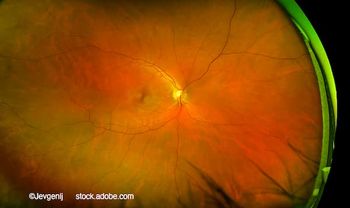
- Ophthalmology Times: August 2024
- Volume 49
- Issue 8
Innovative drug delivery system for sustained control of neovascular AMD
Pearls for implanting the port delivery device with ranibizumab.
Reviewed by Margaret Chang, MD, MS
During a recent Ophthalmology Times EyeView discussion, Margaret Chang, MD, MS, delved into the port delivery system (PDS) for ranibizumab (Susvimo; Genentech), covering implantation requirements, surgical training, and key considerations for patient selection for this novel mode of anti-VEGF delivery. Chang is a retina specialist in private practice at the Retina Consultants Medical Group in Sacramento, California.
The PDS is a long-acting drug delivery system that continuously delivers a customized formulation of ranibizumab into the vitreous. Every surgeon who uses the PDS must undergo appropriate training, including webinars and hands-on wet lab training. In addition, a specialized surgical device liaison supervises surgeons on-site during the first few implantations of the PDS.
Patient selection
Chang noted the importance of patient selection when considering using the PDS. This includes identifying any preoperative conjunctival issues to ensure the selection of appropriate candidates. Patients who are not candidates for implantation are those with conjunctival scarring or those with an autoimmune disease.
The potential adverse effects associated with PDS include the risk of developing endophthalmitis, but these cases are commonly associated with conjunctival retraction or erosion. She noted that proper technique and patient selection can minimize these complications. Septum dislodgement was an adverse event seen in the phase 3 trials, but the implant has recently been redesigned so that there is stronger adhesion between the septum and the overmold. The refill needle is coated with silicone, and less force is needed to refill the PDS. The updated implant and refill needle have performed extremely well in laboratory testing and promise to decrease the risk of septum dislodgement dramatically.
Surgical implantation procedure
Although the surgical implantation procedure is not complicated, Chang emphasized that meticulous adherence to the surgical protocol ensures the success of every step. Following a standard draping procedure, the implantation is performed with the patient under local anesthesia in an outpatient operating room setting. An inferotemporal 25- or 27-gauge infusion cannula is placed and left off. A corneal traction suture is helpful to expose the superotemporal quadrant.
A 6 × 6-mm conjunctival peritomy is measured, with care taken to dissect Tenon’s and the conjunctiva simultaneously, as well as undermining the tissues so there is no residual traction. Cautery is used for hemostasis. The drug reservoir is filled under magnification using the fill needle, taking care not to have any air bubbles in the implant. An MVR blade makes a 3.5-mm partial thickness sclerotomy, exposing the pars plana. “The incision length is important because a longer incision can result in implant dislocation, and shorter incisions can lead to vitreous hemorrhage when the pars plana is incised,” Chang explained.
A laser probe is used to treat the pars plana to minimize the risk of hemorrhage, and the incision is measured again; the pars plana is then incised with a slit knife. The device is implanted through the pars plana into the eye. An extrascleral phalange remains visible through the conjunctiva to facilitate refills. Tenon’s and conjunctiva are closed with 8-0 Vicryl sutures, anchoring the conjunctiva at the limbus with 3-1-1 stitches. “The conjunctival closure is probably one of the most important parts of the procedure to prevent further complications such as conjunctival contraction and erosion,” Chang stated.
Refill procedure
It is useful to know that the sterile in-office refill procedure takes longer than an intravitreal injection and requires proper lighting, magnification, and positioning of the patient to ensure that the refill can be done perpendicularly.
Chang advised positioning the patient before prepping. Having the patient supine at a higher height helps visualize the implant and ensure a perpendicular approach. The needle should not be twisted or reoriented while engaged in the septum. After the implant has been refilled, it is inspected to rule out any damage or septum dislodgement.
Importance of sustained delivery
“The PDS provides predictable durability and control of age-related macular degeneration (AMD) that is even longer than that provided by faricimab (Vabysmo; Genentech) and high-dose aflibercept (Eylea; Regeneron). The PDS is a great option for patients willing to undergo a surgical procedure, which can eliminate the intravitreal injections,” she said.
Margaret Amy Chang, MD, MS
E: [email protected]
Chang is in private practice in Sacramento, California. She reported a financial interest in this subject matter.
Articles in this issue
about 1 year ago
The digital OR: Today and tomorrowabout 1 year ago
A clear path aheadNewsletter
Don’t miss out—get Ophthalmology Times updates on the latest clinical advancements and expert interviews, straight to your inbox.



















































.png)


